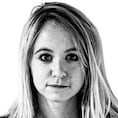As the sun sets, it coats the valley in gold, tinged with purple. A plane flies overhead – perhaps one of those that regularly takes off from a nearby Israeli military base – and the Palestinian boy points in the air, asking if it is a missile.
A missile from Yemen will fly above later, in the early hours of the morning, setting off alarms in the nearby settlement. For the Palestinians there are no shelters, unless they count the traditional caves that families use as storage and, when necessary, stay in themselves.
A husband, wife and two grandchildren live in this home. At 6am the boys wake up to graze the family’s roughly 40 sheep. Their grandfather stands on a ledge, peering down at a settler walking through the Palestinian land below them. That same afternoon another settler will enter their property on a horse and just sit there – they believe to intimidate them – before leaving again.
The Irish Times spent two days and nights this week in Palestinian homes in Masafer Yatta, a collection of villages and hamlets in the occupied West Bank. Activists – both Israeli and international – provide “protective presence” across this area, sleeping in the homes of Palestinians who are regularly harassed by Israeli settlers. The number of settlements around them is constantly increasing.
READ MORE
Many of the Palestinian families have a spare room always ready, with mattresses and blankets. The activists bring cameras, which they view as essential for documenting wrongdoing by settlers and soldiers. They also hope filming helps stop situations from escalating and becoming more violent. As a result, Palestinians here have years of evidence of being taunted, harassed, beaten and shot at; their olive trees, crops and property being damaged or destroyed.

The occupied West Bank, which Israel captured in 1967, makes up a large portion of the territory that two-state solution advocates hoped would form any future Palestinian state alongside Israel.
The settlements – considered illegal under international law – make that increasingly impossible. Many in Israel’s far-right government are actively calling for imminent annexation, though there is no suggestion that Palestinians here would get equal rights as a result.
Masafer Yatta is at the forefront of a campaign to hold on to Palestinian land. Its residents have become fluent in the language of Israeli legal challenges, permits and administrative hurdles, police departments and security forces designations, even if they believe these processes and systems were designed by an occupying force to work against them. They have been legally questioning the designation of the majority of Masafer Yatta’s villages as a closed military zone since the 1980s.
Many Jewish settlers claim they have a biblical right to the territory they call Judea and Samaria, with the number across East Jerusalem and the West Bank increasing from about 250,000 in the early 1990s to about 700,000 today – a figure that includes a significant number of Jewish immigrants born outside of Israel.
Settlers place new outposts in strategic locations, aiming to force more Palestinians off their land and to eventually join with nearby settlements. Most are still in what is known as area C, which makes up the majority of the West Bank and is under full Israeli control.
On Thursday Israeli foreign minister Gideon Sa’ar said he believes settlers are more “exposed to terror and violence” than “any other public in the world”. The death tolls tell a different story. Over the past decade at least 1,755 Palestinians have been killed in the West Bank compared with at least 133 Israelis, UN figures show. The Palestinian death toll includes at least 52 women and 366 children, while the Israeli death toll includes 23 women and 11 children.
A spokesperson from the Israeli government’s Coordination of Government Activities in the Territories (Cogat) referred The Irish Times to the Israel Defence Forces (IDF) for comment on issues raised in this article. An IDF spokesperson said its forces operate in a “complex security environment” in what it calls Judea and Samaria, facing “terrorism and violent riots on a daily basis,” with security forces “deployed… to ensure the safety of the area and its residents, as well as the security of the State of Israel and its citizens.”
The spokesperson said “enforcement actions against illegal construction are carried out in accordance with the law” and that the IDF “acts decisively against violence. Any claim that the IDF supports or enables violence is false.”
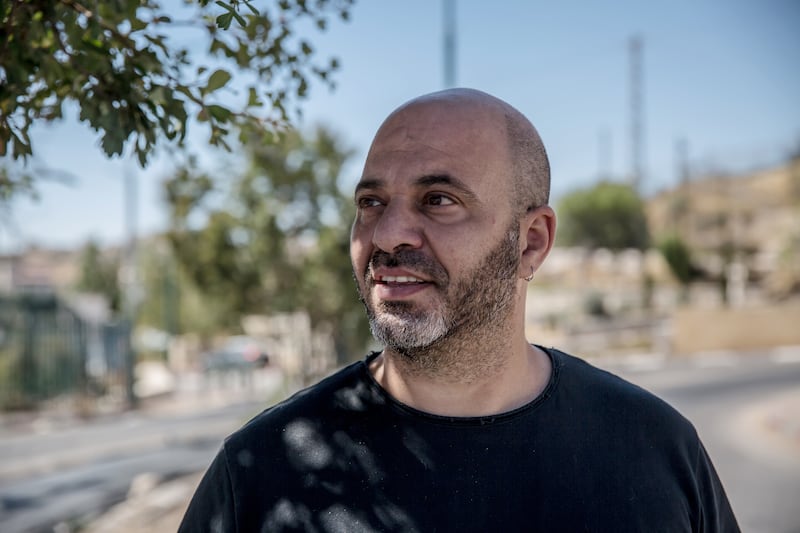
Israeli Itamar Shapira (45) has been volunteering in Masafer Yatta for years.
Shapira was a soldier in the West Bank during the second intifada, which began in 2000. This experience changed his outlook, he says. He realised that “Palestinians are jailed inside the West Bank. They’re not allowed, sometimes even, to leave their villages or cities, and they’re under military rule and dictatorial rule. The only way to enforce such a law on people, a law that is not for them, is through collective punishments ... Over 80 per cent of the orders that we get have to do with just creating fear.”
He says the fear has to be sustained. “Sometimes, if the fear goes too low, they might rebel. So that’s the idea basically ... making sure that people suffer in fear and never know what will happen to them at any given moment ... It’s an existential situation of generations that live without knowing if tomorrow they could drink water, if tonight someone is going to enter their home and burn it while they’re inside, if demolition orders will come.”
The volunteers move in twos. “If my presence helps in some way, then I’m going to do that,” says American academic Jonathan Krohn (30), who has paired with Shapira.
“Somebody told me about the kind of work that was going on down here and the tradition of nonviolent resistance in Masafer Yatta,” Krohn says. “Obviously, there’s a long history of nonviolent resistance all over the world ... But in Masafer Yatta, in this digital age, it’s kind of a new frontier.”
The landscape has changed since they started this work: there are areas they can no longer go to. One is Khalet al-Daba’a, a nearby village that was largely demolished in early May. That was where Irishwoman Máire Ní Mhurchú, or “D” Murphy (70), a volunteer with the International Solidarity Movement (ISM), was detained on May 31st. Anyone else who goes there could be deported like her, activists warn.
“Regardless of whether there’s a ceasefire in Gaza and this genocide is temporarily stopped, the ongoing ... ethnic cleansing in the West Bank goes on,” Krohn says. “Villages are being wiped out. People are being dispossessed of their homes and their land. And it’s an ongoing fight.”
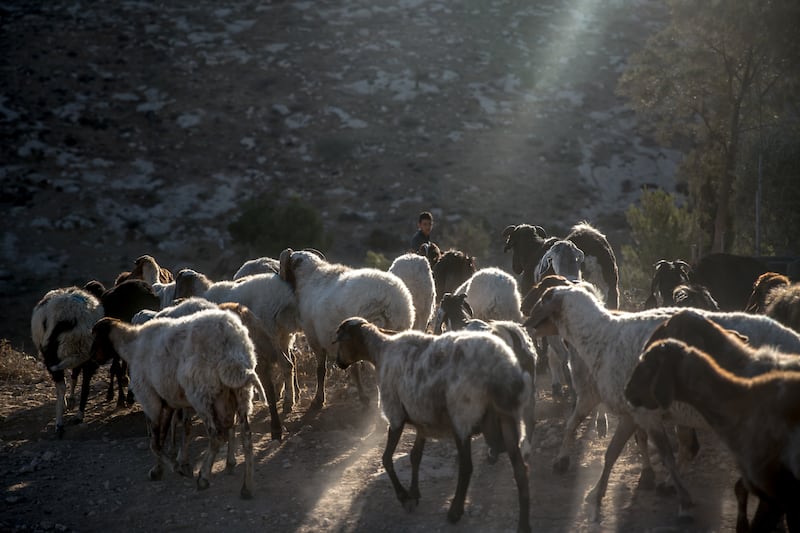
Shapira first visits Musab Raba’i, who lives in At-Tuwani, around 30km southeast of Hebron city. Raba’i has been watching Israeli settlers construct what look like a guard post about 200m from his front door.
“I’ve been attacked for a long time but now they’re closer. They can throw [things] from there to my home,” says the 37 year old. As he speaks, a settler drives by – Raba’i says sometimes the man shouts at his four children. A few days before more settlers tried to enter his garden with a flock of sheep, he says.
Raba’i’s village, and the broader area, was featured in the 2025 Oscar-winning documentary No Other Land. Activists still gather under the home of its co-director Basel Adra, who lives down the road.
But Raba’i says any hope the Oscar win would make a difference faded quickly. “On the ground nothing has changed,” he says. “There’s no safe place now.”

The activists’ next stop is the village of Umm Al Khair.
English teacher and Palestinian activist Tariq Hathaleen (30) already felt like a “refugee” because his family were displaced in the 1940s during the Arab-Israeli war. Palestinians refer to the displacement as the “Nakba”, meaning “catastrophe”.
Hathaleen says his family bought the land they live on in the early 1960s. Among the 170 residents, “we’re one community, we’re relatives, we’re cousins. We stand together in everything”.
An Israeli road was built in about 1980. It was followed by an army base that was later replaced with a settlement, and another settler outpost was replaced with concrete homes. “It basically took half of our lands ... Life changed since then ... We had the first Nakba, and this is the second continuous Nakba since 1980 until today,” Hathaleen says.
As Hathaleen speaks, children cycle their bicycles on the road that bisects the village. They stop in front of a yellow gate – a settlement entrance – with an Israeli flag hanging on one side. While the Israeli flag is a regular sight in this part of the West Bank, the Palestinian flag is almost impossible to spot – Palestinians say they face punishment if they display it.
Human rights organisations say the conditions for Palestinians in Israel and the occupied territories amount to apartheid. Israeli settlers live under civilian law, while Palestinians in the West Bank are dealt with under Israeli military law.
“All of my life, I was born and grow up with this scene of the settlement just a few metres away from my family house,” says Hathaleen. “I can simply see how luxurious their life is. And we are banned from having any kind of basic human rights. We are not allowed to have electricity. We are not allowed to pave our roads. We are not allowed to have water. And they have a swimming pool, they have villas, they have electricity, security, everything they need, everything they dreamed for they get it ... That’s apartheid ... The plan is, since day one, to kick us away from here.”
Now settlers have a “new technique” of shepherding and seizing grazing lands, Hathaleen says, while the villagers – who have about 200 animals left between them – have “zero grazing areas”. Israel also stopped granting Palestinians permits to work in Israel, cutting off another economic source. “Everyone is suffering here,” Hathaleen says.
Alongside that, they face “physical violence, there is verbal violence, and there is destruction of properties”. He says more than 90 buildings were demolished there over the past 18 years. He points to razor wire, saying settlers set it up and residents cannot cross it. He believes the settlers are trying to provoke residents to react so “they can claim it’s a security threat ... Imagine them cursing your mother, the most important person in your life ...” He trails off.

Though Hathaleen can recall many tragedies, two stand out.
About 25 years ago Hathaleen says his brother, Muhammad, was attacked by a security officer from a nearby settlement. Muhammad was left in a coma and when he woke it became clear that he had a mental disability that he still bears today. The incident was previously reported by international media.
In January 2022 Hathaleen’s septuagenarian uncle, Hajj Suleiman, went out to protest against Israeli confiscations of vehicles owned by the village residents. Hathaleen says an Israeli tow truck drove over his uncle, dragging his body along the road and causing wounds that eventually killed him. This incident was condemned by the UN agency for Palestine Refugees (Unrwa). A mural honouring Suleiman was painted in the community centre where we spoke.

Some 11km away, the Palestinian village of Susya has been deemed a closed military zone since early May. This is not unusual – by 2015 one third of the West Bank had been declared similarly closed, according to settlement watchdog Kerem Navot. But the new designation means activists could be arrested if they are caught inside, residents say. At night a police car – its sirens flashing – is posted in a road nearby, visible from homes.
Imran Nawaja (49), known as Yousef, lives at a far end of the village: he uses torchlight to lead the way. Shapira and Krohn will sleep on the floor of his sittingroom inside and Nawaja will rest on the roof of an outhouse in the open air, alert to any noises. One of his two wives also sleeps outside, in a wagon filled with blankets and cushions, to keep watch.
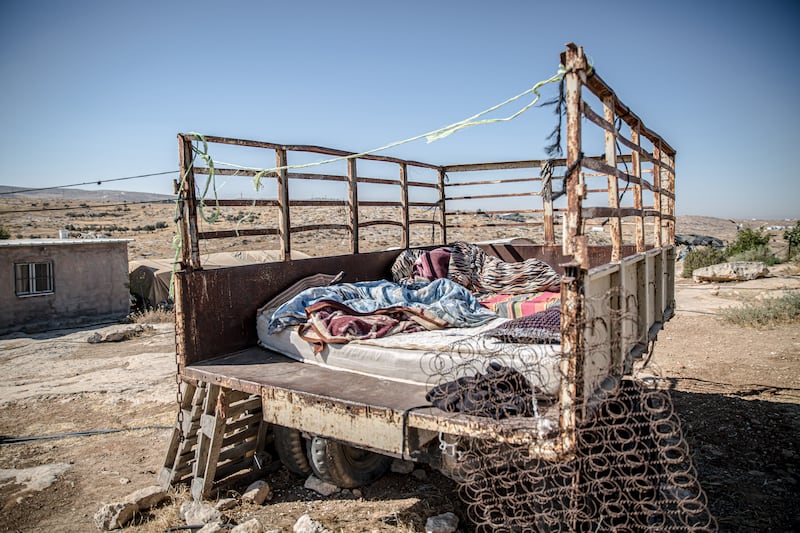
Nawaja was beaten up weeks before by settlers: he needed 12 stitches in his head as a result, he says. His blood is still visible, splattered on the stones.
His other wife was later attacked: he takes out photographs of her in hospital and of her medical report, which confirm a 47-year-old was admitted to the emergency department on June 27th after being beaten, with a haemorrhage in her abdomen.
Nawaja points to a tent in the distance – a new outpost. He says it houses “hilltop youth” and claims it is where his attackers came from.
Susya’s residents previously lived on a nearby location. It was declared an archaeological site in the 1980s, because the remains of an ancient synagogue were discovered there, and they were forced to move. An Israeli settlement, known as Susiya, was established in the vicinity.
How long this has been going on for becomes apparent again as Nawaja scrolls through his phone’s photograph album, pulling up a picture of his aunt – who has since died – standing in front of an Israeli soldier who Nawaja says was barring her from ploughing her land years ago.
Nawaja’s love of his culture is also evident. He pulls up photographs of his mother wearing a thobe, or long tunic, decorated with embroidery known as tatreez. He has videos of her dancing decades ago, and of women joyously celebrating and ceremonially cooking in the run-up to his wedding.
“This is our heritage,” Nawaja says, smiling. Though his family is struggling financially, they serve the activists a meal of bread made with home-grown wheat, olives and olive oil from their trees, and milky tea made from their goats’ milk, with Nawaja saying a key aspect of their culture is hospitality, along with helping each other.
Dotted between the happy memories in his photo album are pictures of soldiers, settlers and more violence. Nawaja describes walking to school with other children and a donkey during the first intifada, or uprising, which began in 1987 and lasted for six years. “We were afraid of the settlers and soldiers, everyone waits together and you go back together.” He left education after fifth grade, saying the journey became too difficult.
In 2013 a school was finally built in Susya but it is now under an Israeli demolition order, like the rest of the village, Nawaja says. NGOs say 84 schools in the West Bank and East Jerusalem are subject to pending demolition orders. One, built using Irish Aid funds, was demolished in late 2023.
Nawaja says he would welcome Ireland’s proposed Occupied Territories Bill and “every law that may help Palestinians”.
The Bill would prohibit trade in goods with Israeli companies operating in the illegally occupied Palestinian territories, though there have been calls to include services in the scope of the Bill.
“We want to live like other people,” he says. “This occupation isn’t like other occupations, where [the occupiers] just exploit [people]. They actively want us to not be here.
“We will not leave this place. It was our fathers’ fathers’. We are here legally and they are not ... They already took half of our land. Why don’t they stay there and life will be beautiful.”
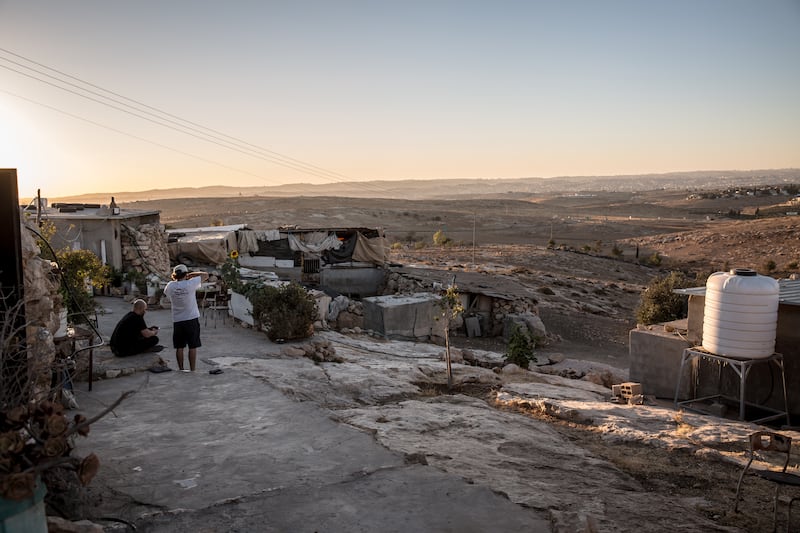
Reflecting on these comments later, Shapira, the activist, says it is clear Palestinian residents in Masafer Yatta are “hanging on by a thread”.
The only possibility for them to stay where they are is “contact with people from the outside”, Shapira suggests.
He says he doesn’t know if the Occupied Territories Bill would “do anything or not – I suspect not”.
He says: “But what it does is maintain the contact. What’s important is to maintain the contact, because without the outside contact, these villages are going to be razed in two weeks.”

